
18 Jan, 2017
ASEAN@50 campaign brand confusion: Historic look at how it transpired, and how to fix it
SINGAPORE – As the ASEAN Tourism Forum 2017 gets under way here this week, one of the big rah-rah announcements will be a range of activities to promote the VisitASEAN@50 campaign. While that has got everyone excited, one key underlying issue remains unaddressed — the confusion and lack of clarity over the ASEAN brand image and logo.
This dispatch takes a historic look at how the ASEAN tourism industry has only made the branding issue worse for itself by only focussing on the future minus a thorough evaluation of the past. All the documents cited to bolster my arguments are scanned copies of the originals which I have meticulously maintained over the years, a treasure trove of history which no-one else can claim to own.
 |
| The ASEAN Tourism Forum 2017 website has four logos. Three clearly refer to ASEAN alone and only one to both “ASEAN and Southeast Asia”. Does anyone know what each logo represents? No?
|
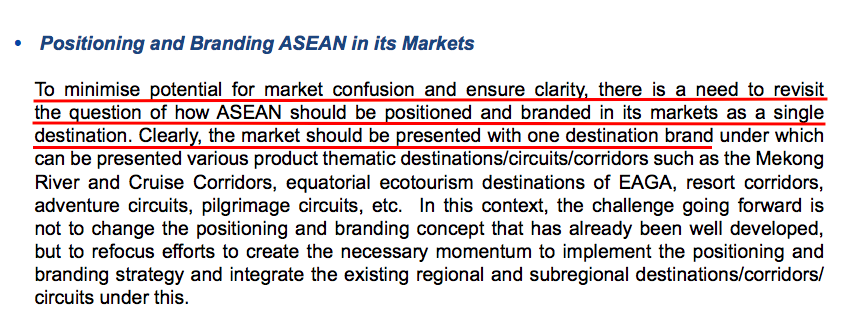 |
| The potential for confusion and lack of clarity over the branding, of which the logos are a key part, is exactly what the ASEAN Tourism Strategic Plan for 2016-25 cautions about in the quote above. In fact, the confusion and lack of clarity on ASEAN branding has been a historical problem dating back to 1984, yes, 1984, as the following slides will prove.
|
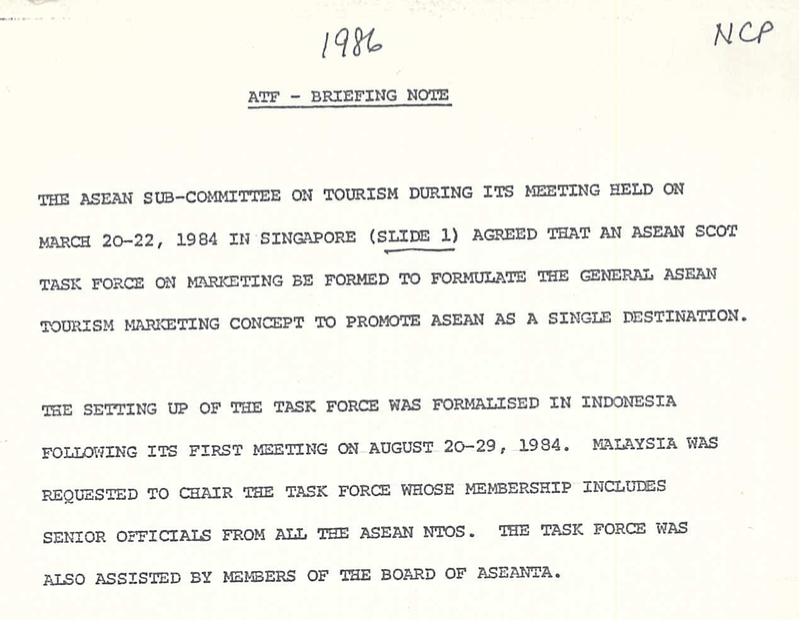 |
| It was in Singapore way back in March 1984 that what was then known as the ASEAN Sub-committee of Tourism set up a Task Force to formulate the concept of promoting ASEAN as a single destination.
|
 |
| This is how the preamble described the prevailing image of ASEAN at the time: It was seen as political organisation, with no image as a tourist destination. That was clearly identified as The Problem.
|
 |
| The core recommended solution was to promote the ASEAN image in world markets by HIGHLIGHTING the names of the individual countries (which in those days included only five founding members: Thailand, Singapore, Malaysia, Philippines and Indonesia).
|
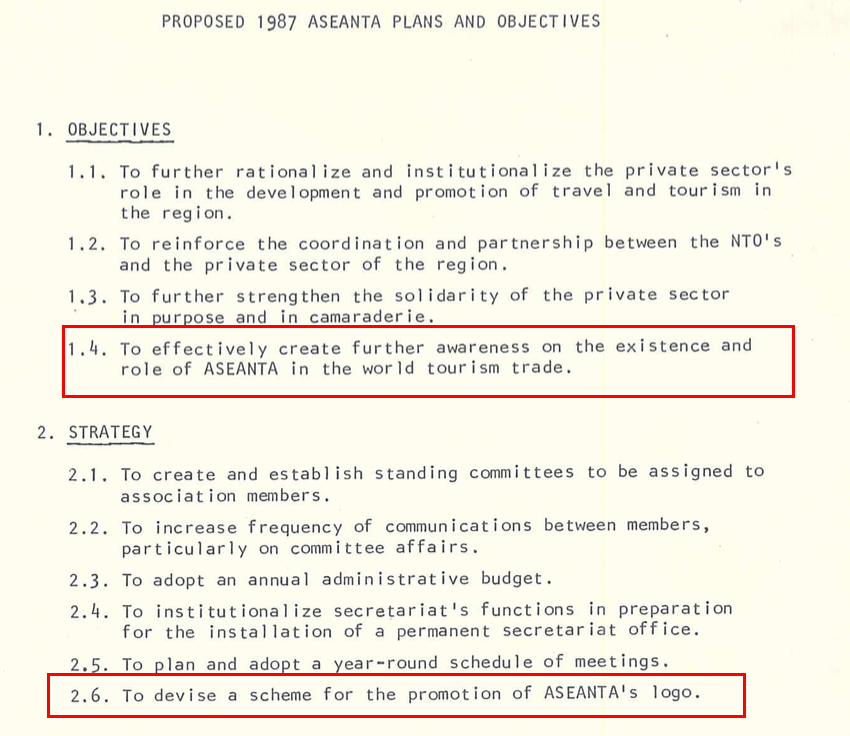 |
| Forward to 1987 when ASEANTA, the grouping of private sector ASEAN travel & tourism associations, plus national airlines, is also facing similar challenges and talking of building up its own awareness on the world stage.
|
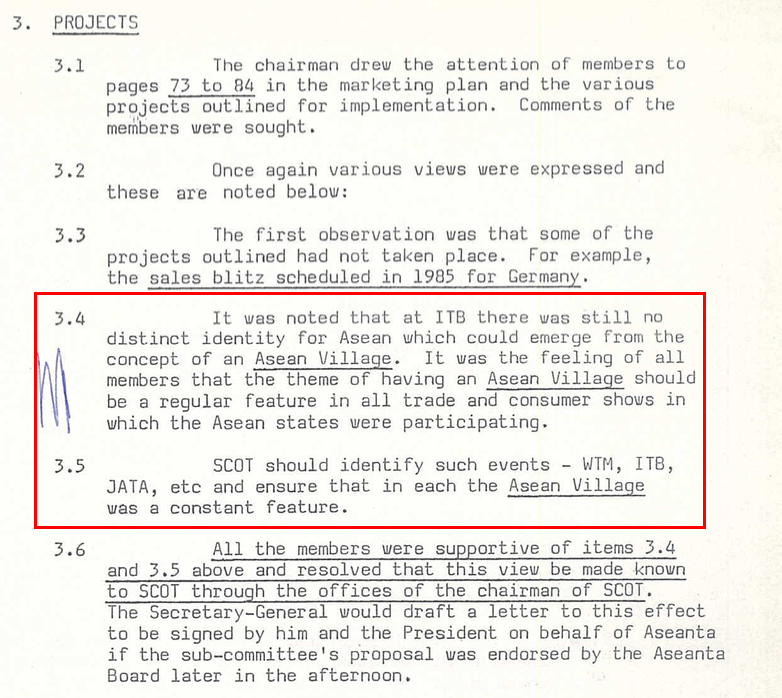 |
| One very strong recommendation by ASEANTA to the NTOs was to develop the theme of an “ASEAN Village” which could become a “constant feature” at all international trade shows.
|
 |
| In 1987, when the ASEAN heads of government endorsed the declaration of a Visit ASEAN Year in 1992 to mark the 25th anniversary of ASEAN. That meant a five-year planning and preparation process.
|
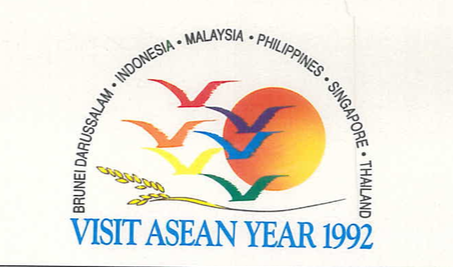 |
| By 1992, Brunei Darussalam had joined ASEAN, and this was the logo of the first Visit ASEAN Year 1992.
|
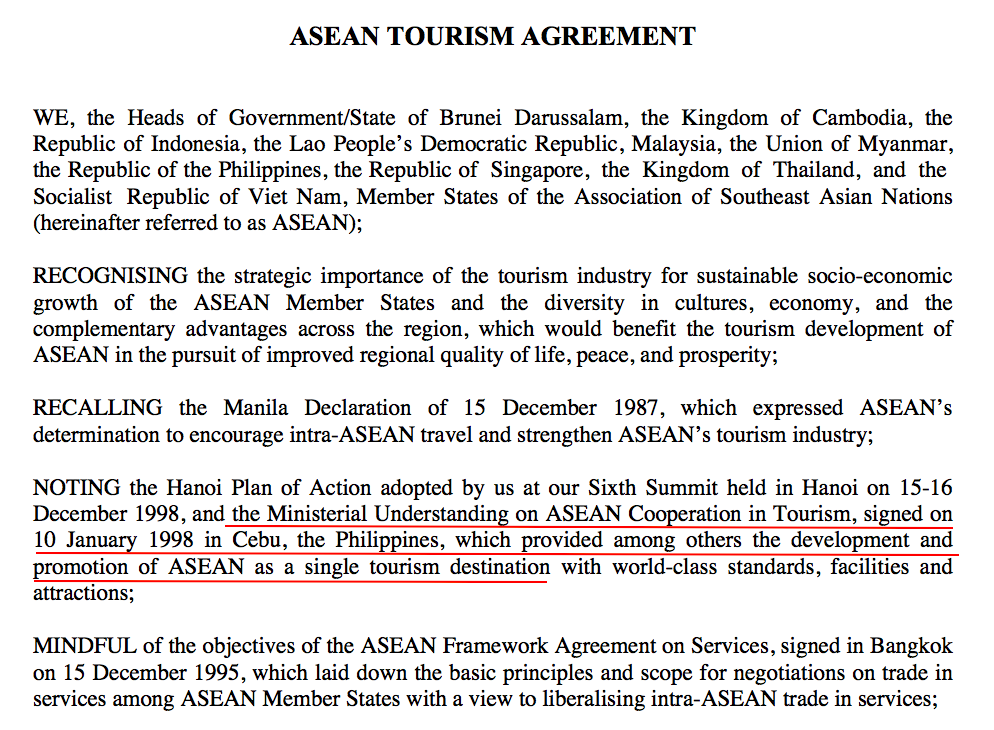 |
| Fast forward to 2002, the other Greater Mekong Subregion countries (Myanmar, Laos, Cambodia and Vietnam) had joined ASEAN. The first ASEAN Tourism Agreement was signed by the ASEAN heads of government in November 2002. Note the importance of the mandate. The agreement was signed by the heads of government, not the tourism ministers. This is what it said about branding:
|
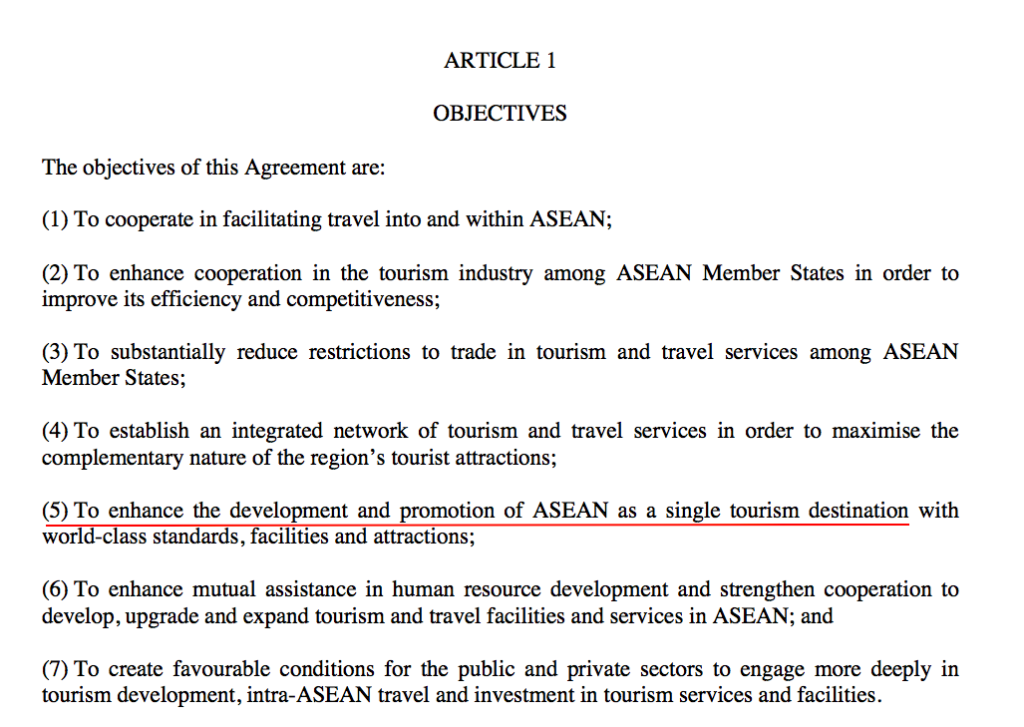 |
| Note my underlining of Objective 5.
|
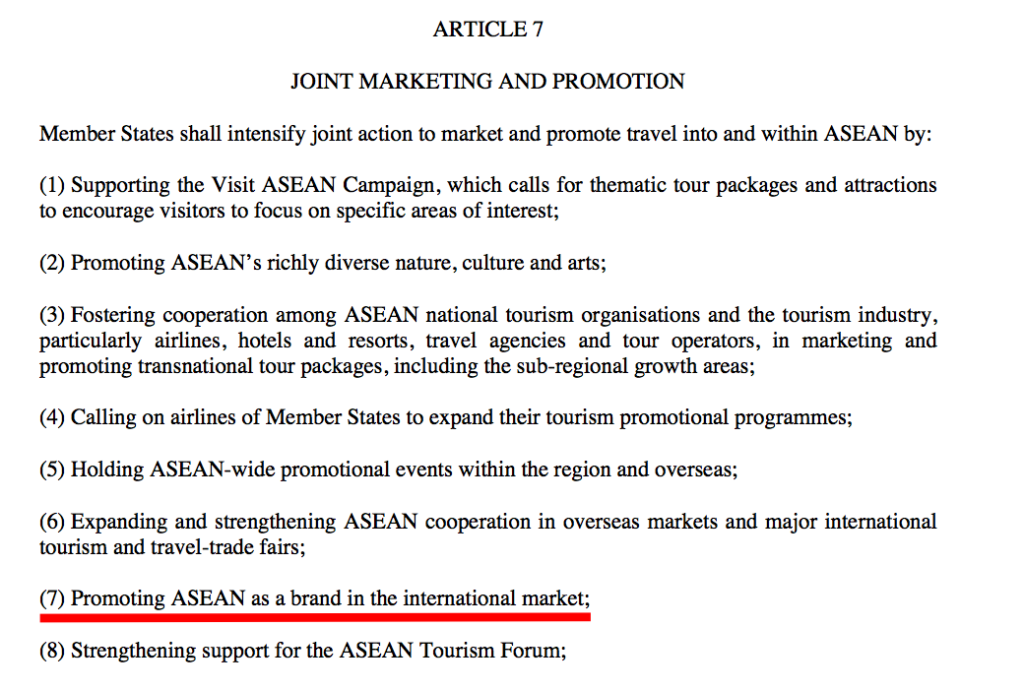 |
| Note my underlining of Objective 7. It clearly says “Promoting ASEAN” as a brand, not Southeast Asia.
|
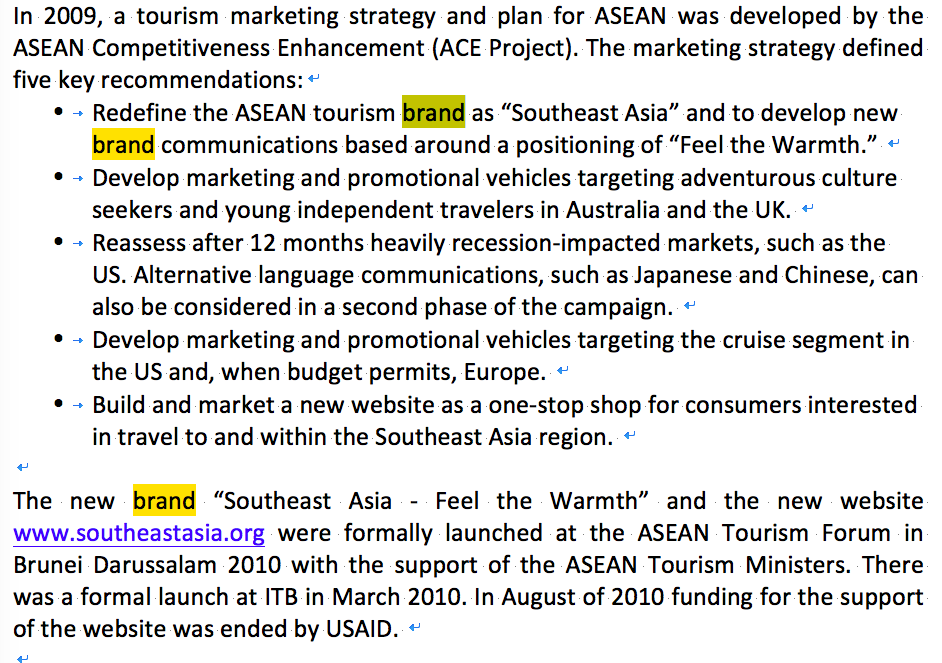 |
| Fast forward to 2009, and the US Government has now entered the fray. The consultants appointed by the US Agency for International Development effectively conclude that all the previous agreements, campaigns and other efforts to market ASEAN as a single destination have failed. The “ASEAN” brand must be replaced by “Southeast Asia.” The recommendation arouses rigorous debate, but is allowed to pass.
|
 |
| So, now we have a “Visit Southeast Asia” marketing strategy taking shape as a “co-brand.”
|
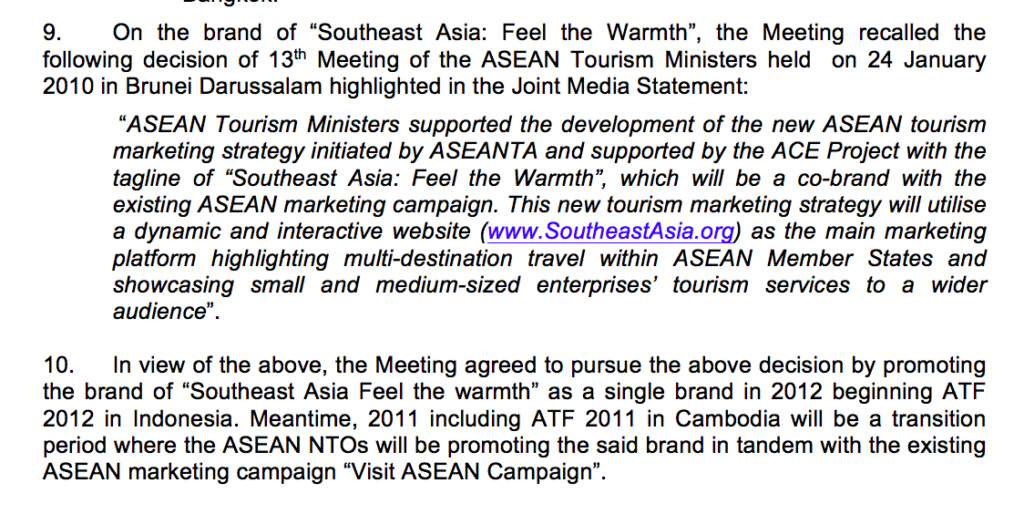 |
| The strategy is signed off by the ASEAN tourism ministers in Brunei in January 2010 and agreed to be implemented as of the 2012 ATF in Indonesia.
|
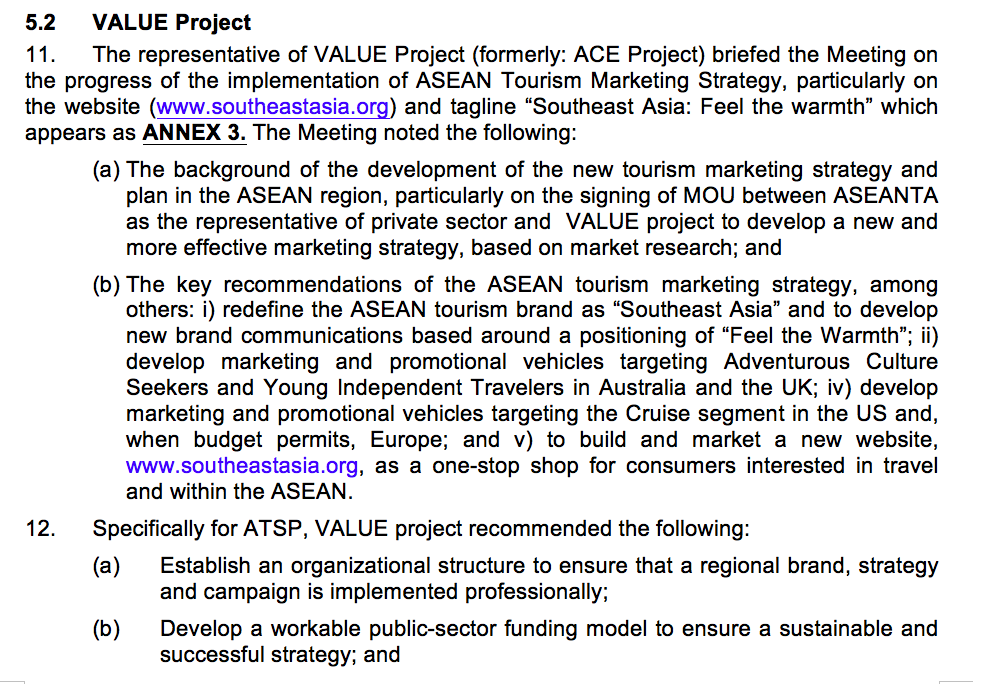 |
| The ACE project itself has now been rebranded as the “VALUE Project” and makes additional recommendations about organisational structure and funding to advance the brand campaign.
|
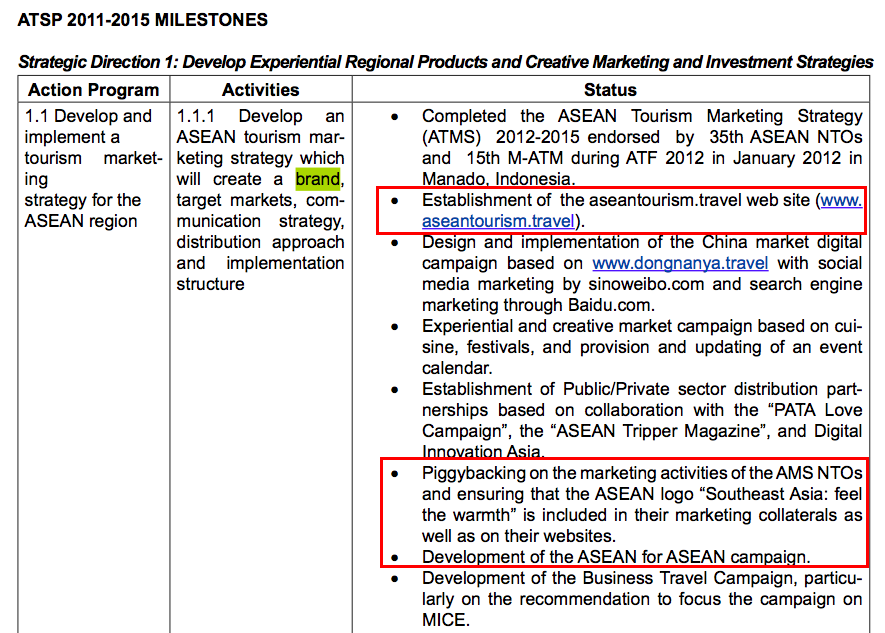 |
| By now, confusion has begun to set in big-time. The ASEAN Tourism Strategic Plan (ATSP) 2011-2015 cites the establishment of a website called aseantourism.travel. What happened to southeastasia.org?
|
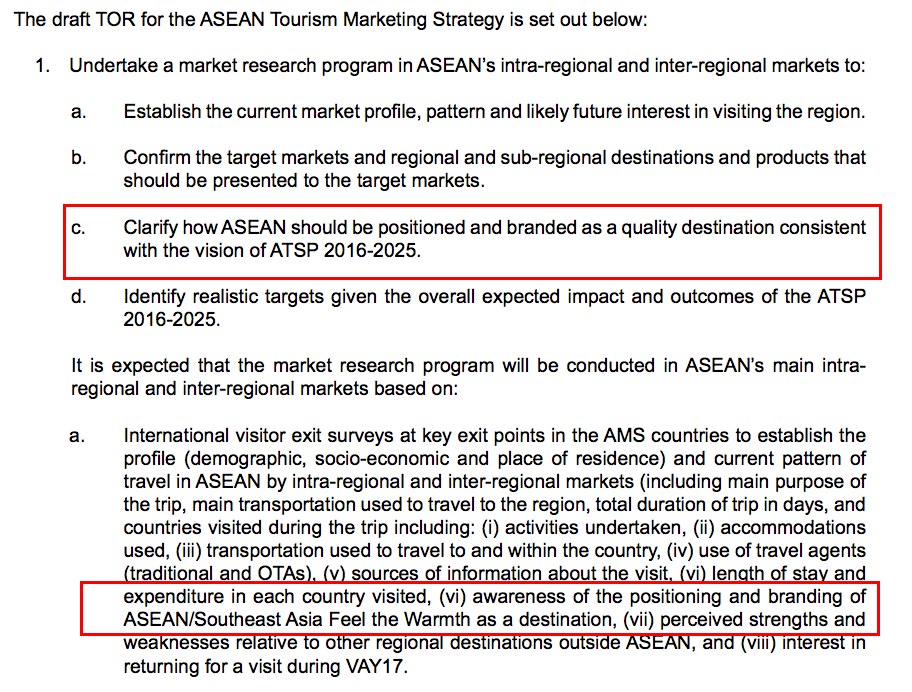 |
| The ToR for the ATSP 2016-25 (which is now in place) again cites the need to “clarify how ASEAN should be positioned and branded as a quality destination.” At the same time, it refers to “ASEAN/Southeast Asia Feel the Warmth”.
|
 |
| Other ASEAN tourism meetings have also suggested the need to “collectively organise an ASEAN Tourism Area in international tourism fairs”, which is the same as the concept of the ASEAN village proposed way back in 1984.
|
 |
| In reality, it all boils down to funding issues. A proposal was made to raise US$1 million per year between 2011-15.
|
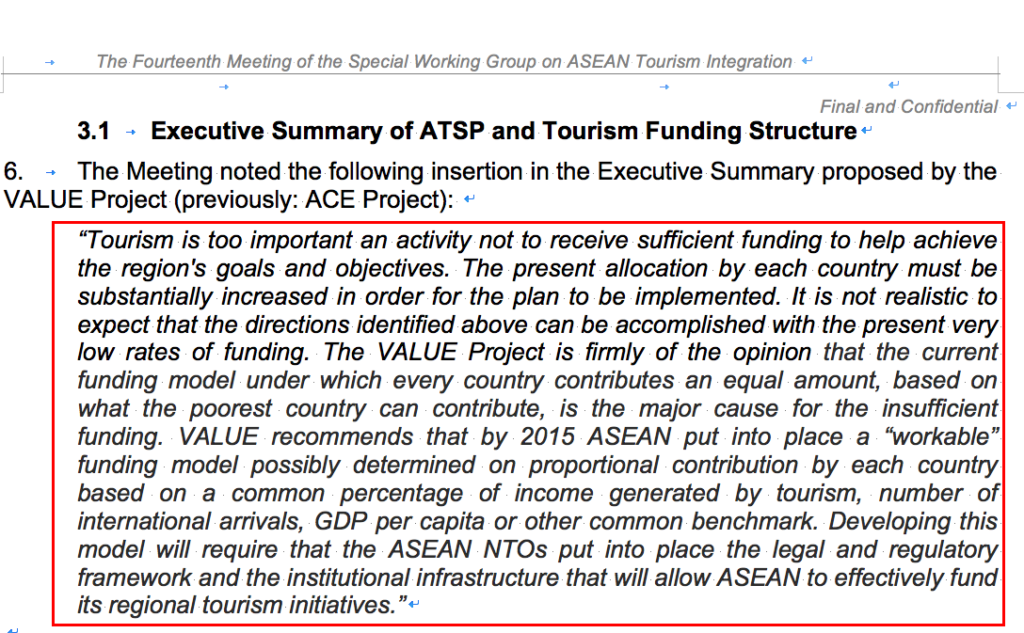 |
| The VALUE project identified the root cause of the funding problem, noting that the current model under which every country contributes an equal amount, based on what the poorest country can contribute, is the major cause of the insufficient funding. It suggested a more “workable” funding model. This was long known to the ASEAN NTOs, but the VALUE Project had the advantage of being able to cast it in stone.
|
| Meanwhile, the confusion and lack of clarity rages on. This official press release announcing the launch of the VisitASEAN@50 campaign refers to both ASEAN and Southeast Asia in several instances.
CONCLUSION Many of today’s ASEAN tourism leaders have little or no sense of history and zero appreciation for the great work done by their predecessors in the formative years of ASEAN tourism. Without the benefit of hindsight, there is an even chance that foresight will be heavily blurred. This article is designed to shake up that mindset and stop the current crop of tourism decision-makers from re-inventing the wheel. The solution is not too difficult. The over-arching ASEAN logo (I’m not sure many tourism leaders themselves know what it symbolises) needs to accompanied by: (+) A spelling out of the acronym to clearly state it stands for “Association of Southeast Asian Nations”. The name “Southeast Asia” appears automatically, with no further need for another “Southeast Asia Feel the Warmth” brand or logo. (+) Highlighting the names of all 10 ASEAN countries under the ASEAN umbrella, a recommendation dating back to 1984. (+) The over-arching Mission Statement of ASEAN integration viz., One Vision, One Identity, One Community. This goes to the heart of what ASEAN stands for and hopes to achieve. This will also solve all the branding confusion, allow a clear assertion of ASEAN identity and enable all constituents within ASEAN and abroad to know which countries it comprises of. Finally, ASEAN NTOs need to get serious about promoting the ASEAN Village concept at all trade shows, conferences and events worldwide. Even the most cursory examination of the ASEAN presence at international trade shows over the last two decades will show that this very valuable recommendation was never seriously carried through.
|



Liked this article? Share it!